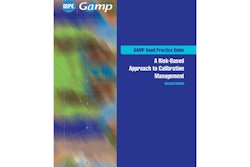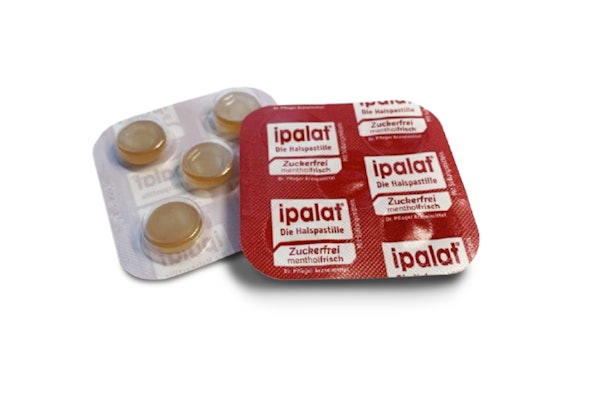
Nearly two thirds (63%) of 2,000 community, retail, and hospital pharmacists surveyed in Europe, the U.S., and Australia believe current policies and technology are insufficient to deal with counterfeit medicines. Additionally, 61% of those surveyed also said that the prevalence of counterfeit medication is a serious issue in their country.
The International Hologram Manufacturers Assn. (IHMA) commented on a joint survey by the International Pharmaceutical Federation (FIP) and Pfizer highlighting pharmacist concerns with counterfeit medicines. IHMA says that statistics paint an alarming picture when it comes to pharmaceutical counterfeiting not only in developing markets but also mature sectors.
The World Health Organisation estimates that up to 25% of the medicines consumed in some developing countries are counterfeit or substandard and that annual earnings from the global sales of fake and substandard medicines top $32 billion.
Ian Lancaster, IHMA general secretary, said that counterfeiting is not only a serious threat to the pharmaceutical industry but puts people's lives and health at risk and more has to be done to tackle the problem. “The survey clearly shows that pharmacists feel more has to be done about tackling the counterfeiters and ensuring patients receive safe, effective, and bonafide medicines. One of the key challenges is for manufacturers and producers to stay ahead of the counterfeiters and here holograms are playing a key role in combating criminal activity,” he said.
“Holograms work best where the packaging remains with the unit dose--almost everywhere except the U.S., and when they are regionalized for a specific market,” said Lancaster. (In the U.S., pharmacists don't usually have access to the original unit-dose packaging and the bulk packs they purchase almost never have holograms.)
Holograms can combine authentication overt features with covert elements and forensic and track-and-trace elements, and can be used as seals, labels, or as the foil in a blister pack.
Many branded medicines have a hologram on the pack or in the blister pack, and a few years ago Malaysia introduced its Meditag® serialized hologram label to be found on all registered medicines--traditional and western--helping the Ministry of Health inspectors to detect unauthorized and counterfeit product.
“The evolving anti-counterfeiting role of holograms lies in their ability to combine authentication with detection,” said Lancaster. “And sometimes pack enhancement, as Rodotex GmbH has shown with its packaging for Vitamin C+Kollagen in Indonesia.”
Editor's note: This article was supplied by the International Hologram Manufacturers Assn. (IHMA). The International Pharmaceutical Federation (FIP)/Pfizer report was undertaken by APCO Insight to better understand the needs, concerns, and attitudes of pharmacists. The results were reported at the FIP Congress, Lisbon, Portugal.
The International Hologram Manufacturers Assn. (IHMA) commented on a joint survey by the International Pharmaceutical Federation (FIP) and Pfizer highlighting pharmacist concerns with counterfeit medicines. IHMA says that statistics paint an alarming picture when it comes to pharmaceutical counterfeiting not only in developing markets but also mature sectors.
The World Health Organisation estimates that up to 25% of the medicines consumed in some developing countries are counterfeit or substandard and that annual earnings from the global sales of fake and substandard medicines top $32 billion.
Ian Lancaster, IHMA general secretary, said that counterfeiting is not only a serious threat to the pharmaceutical industry but puts people's lives and health at risk and more has to be done to tackle the problem. “The survey clearly shows that pharmacists feel more has to be done about tackling the counterfeiters and ensuring patients receive safe, effective, and bonafide medicines. One of the key challenges is for manufacturers and producers to stay ahead of the counterfeiters and here holograms are playing a key role in combating criminal activity,” he said.
“Holograms work best where the packaging remains with the unit dose--almost everywhere except the U.S., and when they are regionalized for a specific market,” said Lancaster. (In the U.S., pharmacists don't usually have access to the original unit-dose packaging and the bulk packs they purchase almost never have holograms.)
Holograms can combine authentication overt features with covert elements and forensic and track-and-trace elements, and can be used as seals, labels, or as the foil in a blister pack.
Many branded medicines have a hologram on the pack or in the blister pack, and a few years ago Malaysia introduced its Meditag® serialized hologram label to be found on all registered medicines--traditional and western--helping the Ministry of Health inspectors to detect unauthorized and counterfeit product.
“The evolving anti-counterfeiting role of holograms lies in their ability to combine authentication with detection,” said Lancaster. “And sometimes pack enhancement, as Rodotex GmbH has shown with its packaging for Vitamin C+Kollagen in Indonesia.”
Editor's note: This article was supplied by the International Hologram Manufacturers Assn. (IHMA). The International Pharmaceutical Federation (FIP)/Pfizer report was undertaken by APCO Insight to better understand the needs, concerns, and attitudes of pharmacists. The results were reported at the FIP Congress, Lisbon, Portugal.



















